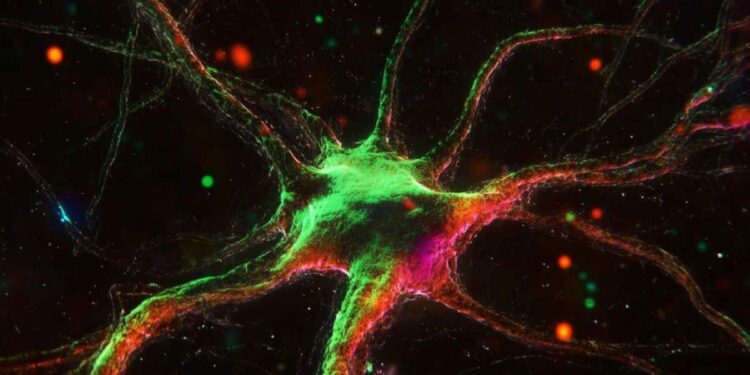Summary: A recent study has found that dopamine signals have a minimal impact on rapid neural activity in the striatum, challenging existing theories about dopamine’s role in brain signaling. Using advanced optical neural chip technology, researchers observed that dopamine signals within normal physiological ranges do not significantly affect neural processing.
However, artificially elevated dopamine levels did show an effect, suggesting that other neural inputs might be more influential in sub-second brain processes. This research opens new avenues for understanding dopamine’s complex role in brain function and related disorders.
Key Facts:
- Dopamine signals within normal ranges have minimal impact on rapid neural activity in the striatum.
- Artificially elevated dopamine levels affect neural processing, indicating other factors may be more influential.
- The study uses advanced optical neural chip technology to monitor electrical and chemical brain signals simultaneously.
Source: DGIST
DGIST (President Lee Kunwoo) Department of Brain Sciences Professor Lee Kwang and his team have discovered a new correlation between neural signaling in the brain and dopamine signaling in the striatum.
The human brain requires fast neural signal processing in a short period of less than a second.
Dopamine is known to have the strongest effect on brain neural signals, but the research team’s newly developed “optical neural chip-based multiple brain signal monitoring technology” shows that changes in dopamine signals within the physiological range do not affect brain neural signal processing.

Dopamine is a chemical neuromodulator that plays an essential role in learning, movement, motivation, and decision-making. It has been linked to a number of diseases, including Parkinson’s disease, addiction, and depression.
To analyze the relevance of dopamine signaling to brain neural signal processing and related diseases, DGIST Professor Lee Kwang and his team developed an “optical neural chip-based multiple brain signal monitoring technology” with Professor Masmanidis’ team at UCLA.
The technology can simultaneously record electrical and chemical brain neural signals, and it confirmed that dopamine signaling in the artificially manipulated striatum induces action potential changes in neurons. The findings were validated through machine learning.
The team used optogenetics to simultaneously observe dopamine and neural activity in the “ventral striatum” while controlling the activity of dopamine neurons.
First, when dopamine was not released during neural signal processing in the brain, no abnormalities were found in the activity of the neurons, and when dopamine was released within the normal physiological range (e.g., during food intake), only small or inconsistent changes in the activity of the neurons were observed.
However, when dopamine was artificially released at more than five times the normal physiological range, a significant effect on neural signal processing in the brain was observed. This suggests that other factors may be more important than dopamine signaling in the brain for certain neural signaling processes, contrary to current theories.
“This study demonstrates for the first time that dopamine signals from food rewards play a minor role in rapidly shaping neural activity in the striatum.
“This suggests that on a sub-second time scale, neural activity in the striatum may be influenced by other external neural inputs rather than dopamine,” said DGIST Professor Lee Kwang.“We will conduct follow-up studies to illuminate the sophisticated physiology of dopamine in relation to time, including its long-term contribution.”
About this dopamine and neuroscience research news
Author: Wankyu Lim
Source: DGIST
Contact: Wankyu Lim – DGIST
Image: The image is credited to Neuroscience News
Original Research: Closed access.
“Constraints on the subsecond modulation of striatal dynamics by physiological dopamine signaling” by Lee Kwang et al. Nature Neuroscience
Abstract
Constraints on the subsecond modulation of striatal dynamics by physiological dopamine signaling
Dopaminergic neurons play a crucial role in associative learning, but their capacity to regulate behavior on subsecond timescales remains debated.
It is thought that dopaminergic neurons drive certain behaviors by rapidly modulating striatal spiking activity; however, a view has emerged that only artificially high (that is, supra-physiological) dopamine signals alter behavior on fast timescales. This raises the possibility that moment-to-moment striatal spiking activity is not strongly shaped by dopamine signals in the physiological range.
To test this, we transiently altered dopamine levels while monitoring spiking responses in the ventral striatum of behaving mice. These manipulations led to only weak changes in striatal activity, except when dopamine release exceeded reward-matched levels.
These findings suggest that dopaminergic neurons normally play a minor role in the subsecond modulation of striatal dynamics in relation to other inputs and demonstrate the importance of discerning dopaminergic neuron contributions to brain function under physiological and potentially nonphysiological conditions.





Discussion about this post